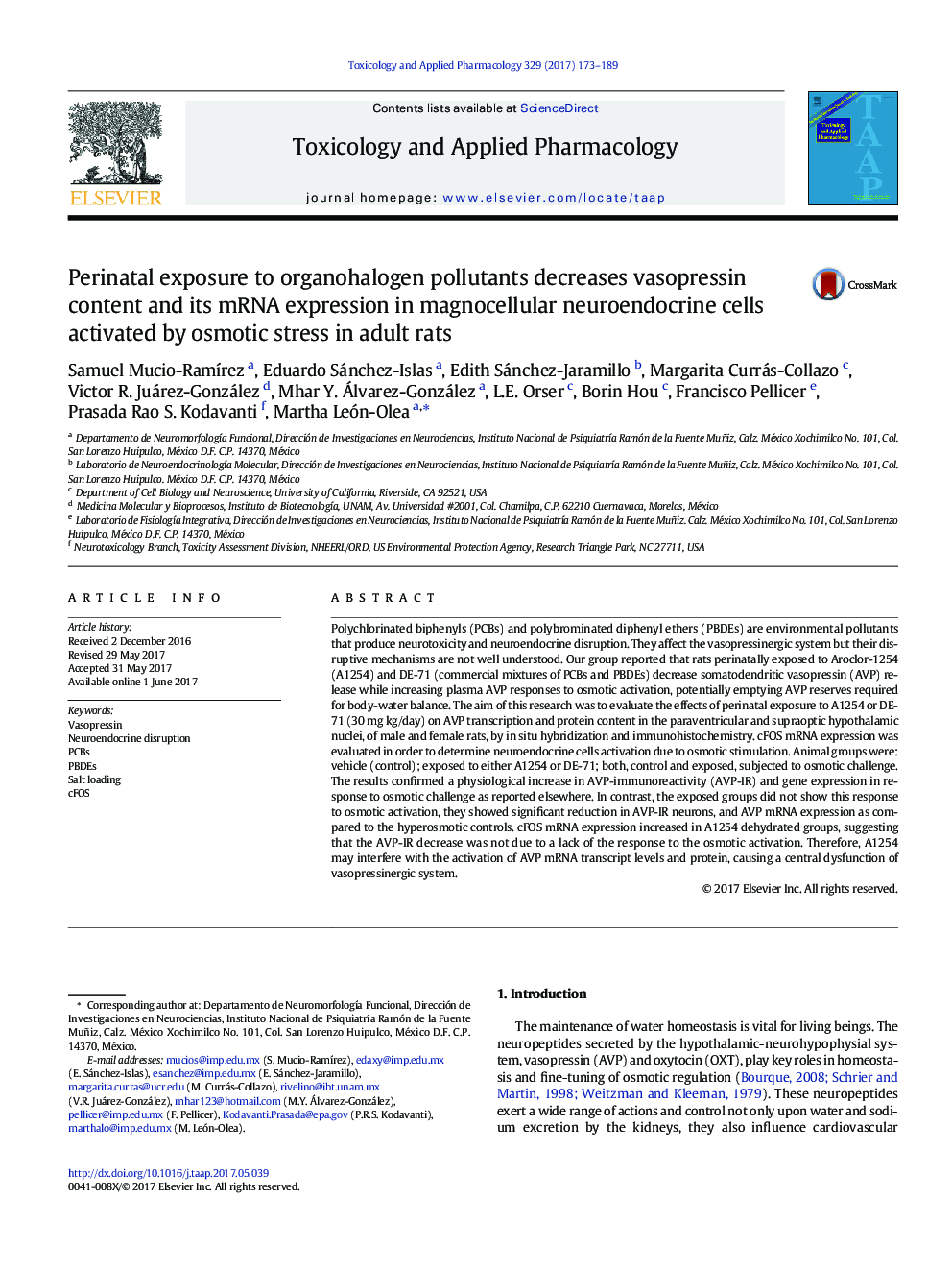| کد مقاله | کد نشریه | سال انتشار | مقاله انگلیسی | نسخه تمام متن |
|---|---|---|---|---|
| 5558351 | 1561133 | 2017 | 17 صفحه PDF | دانلود رایگان |

- Perinatal exposure to A1254 and DE-71 disrupts the vasopressin system of adult rats.
- Exposure to organohalogens reduces AVP responses to osmotic stress in PVN and SON.
- Perinatal exposure to A1254 fails to increase AVP mRNA in the hyperosmotic challenge.
- Hyperosmotic stress and A1254 exposure activate cFOS gene in PVN and SON neurons.
- Perinatal exposure to A1254 disrupts the AVP system similarly in Wistar and SD rats.
Polychlorinated biphenyls (PCBs) and polybrominated diphenyl ethers (PBDEs) are environmental pollutants that produce neurotoxicity and neuroendocrine disruption. They affect the vasopressinergic system but their disruptive mechanisms are not well understood. Our group reported that rats perinatally exposed to Aroclor-1254 (A1254) and DE-71 (commercial mixtures of PCBs and PBDEs) decrease somatodendritic vasopressin (AVP) release while increasing plasma AVP responses to osmotic activation, potentially emptying AVP reserves required for body-water balance. The aim of this research was to evaluate the effects of perinatal exposure to A1254 or DE-71 (30 mg kg/day) on AVP transcription and protein content in the paraventricular and supraoptic hypothalamic nuclei, of male and female rats, by in situ hybridization and immunohistochemistry. cFOS mRNA expression was evaluated in order to determine neuroendocrine cells activation due to osmotic stimulation. Animal groups were: vehicle (control); exposed to either A1254 or DE-71; both, control and exposed, subjected to osmotic challenge. The results confirmed a physiological increase in AVP-immunoreactivity (AVP-IR) and gene expression in response to osmotic challenge as reported elsewhere. In contrast, the exposed groups did not show this response to osmotic activation, they showed significant reduction in AVP-IR neurons, and AVP mRNA expression as compared to the hyperosmotic controls. cFOS mRNA expression increased in A1254 dehydrated groups, suggesting that the AVP-IR decrease was not due to a lack of the response to the osmotic activation. Therefore, A1254 may interfere with the activation of AVP mRNA transcript levels and protein, causing a central dysfunction of vasopressinergic system.
Journal: Toxicology and Applied Pharmacology - Volume 329, 15 August 2017, Pages 173-189